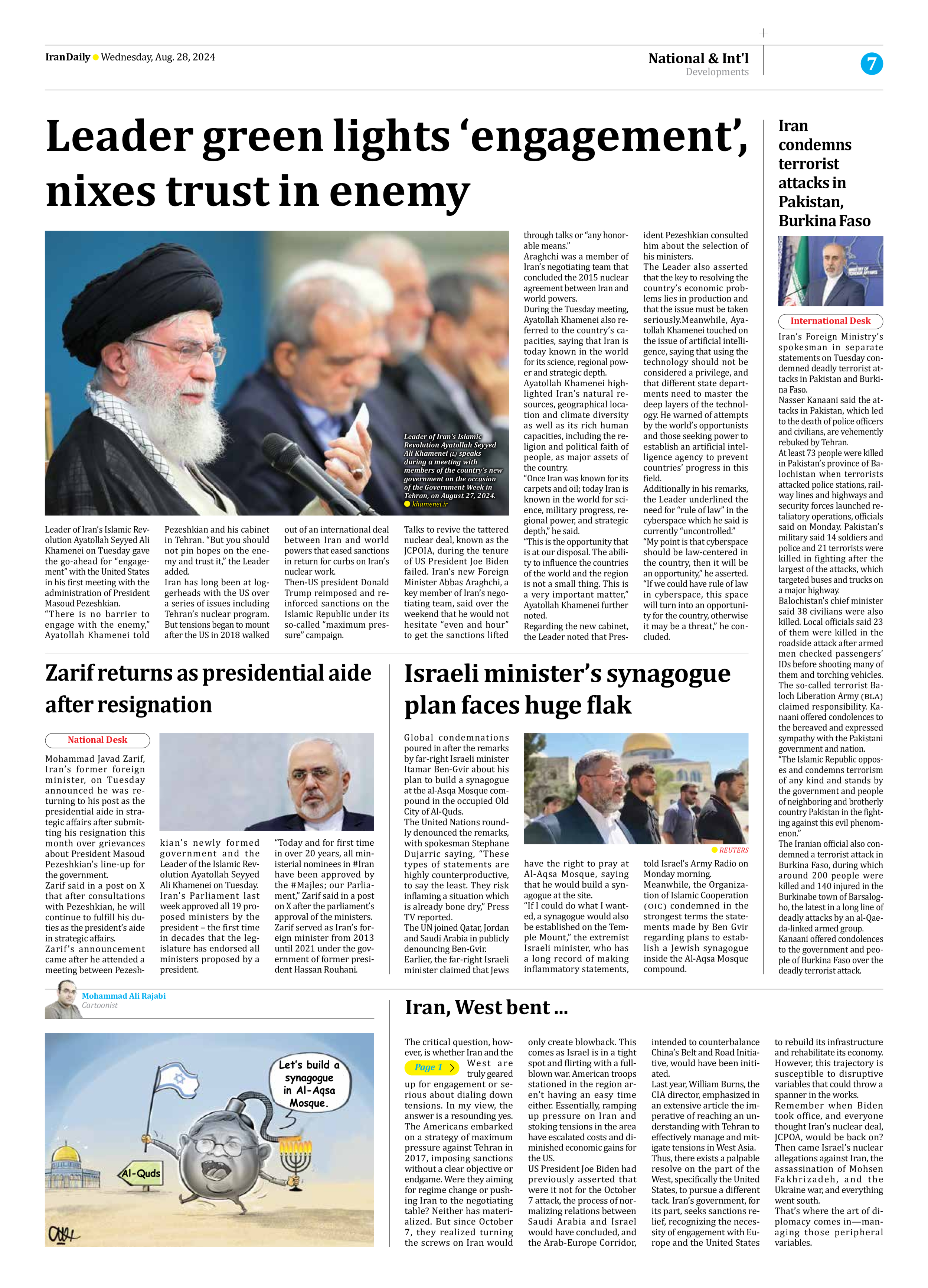
Iran, West bent ...
Page 1
The critical question, however, is whether Iran and the West are truly geared up for engagement or serious about dialing down tensions. In my view, the answer is a resounding yes. The Americans embarked on a strategy of maximum pressure against Tehran in 2017, imposing sanctions without a clear objective or endgame. Were they aiming for regime change or pushing Iran to the negotiating table? Neither has materialized. But since October 7, they realized turning the screws on Iran would only create blowback. This comes as Israel is in a tight spot and flirting with a full-blown war. American troops stationed in the region aren’t having an easy time either. Essentially, ramping up pressure on Iran and stoking tensions in the area have escalated costs and diminished economic gains for the US.
US President Joe Biden had previously asserted that were it not for the October 7 attack, the process of normalizing relations between Saudi Arabia and Israel would have concluded, and the Arab-Europe Corridor, intended to counterbalance China’s Belt and Road Initiative, would have been initiated.
Last year, William Burns, the CIA director, emphasized in an extensive article the imperative of reaching an understanding with Tehran to effectively manage and mitigate tensions in West Asia.
Thus, there exists a palpable resolve on the part of the West, specifically the United States, to pursue a different tack. Iran’s government, for its part, seeks sanctions relief, recognizing the necessity of engagement with Europe and the United States to rebuild its infrastructure and rehabilitate its economy.
However, this trajectory is susceptible to disruptive variables that could throw a spanner in the works.
Remember when Biden took office, and everyone thought Iran’s nuclear deal, JCPOA, would be back on? Then came Israel’s nuclear allegations against Iran, the assassination of Mohsen Fakhrizadeh, and the Ukraine war, and everything went south.
That’s where the art of diplomacy comes in—managing those peripheral
variables.







